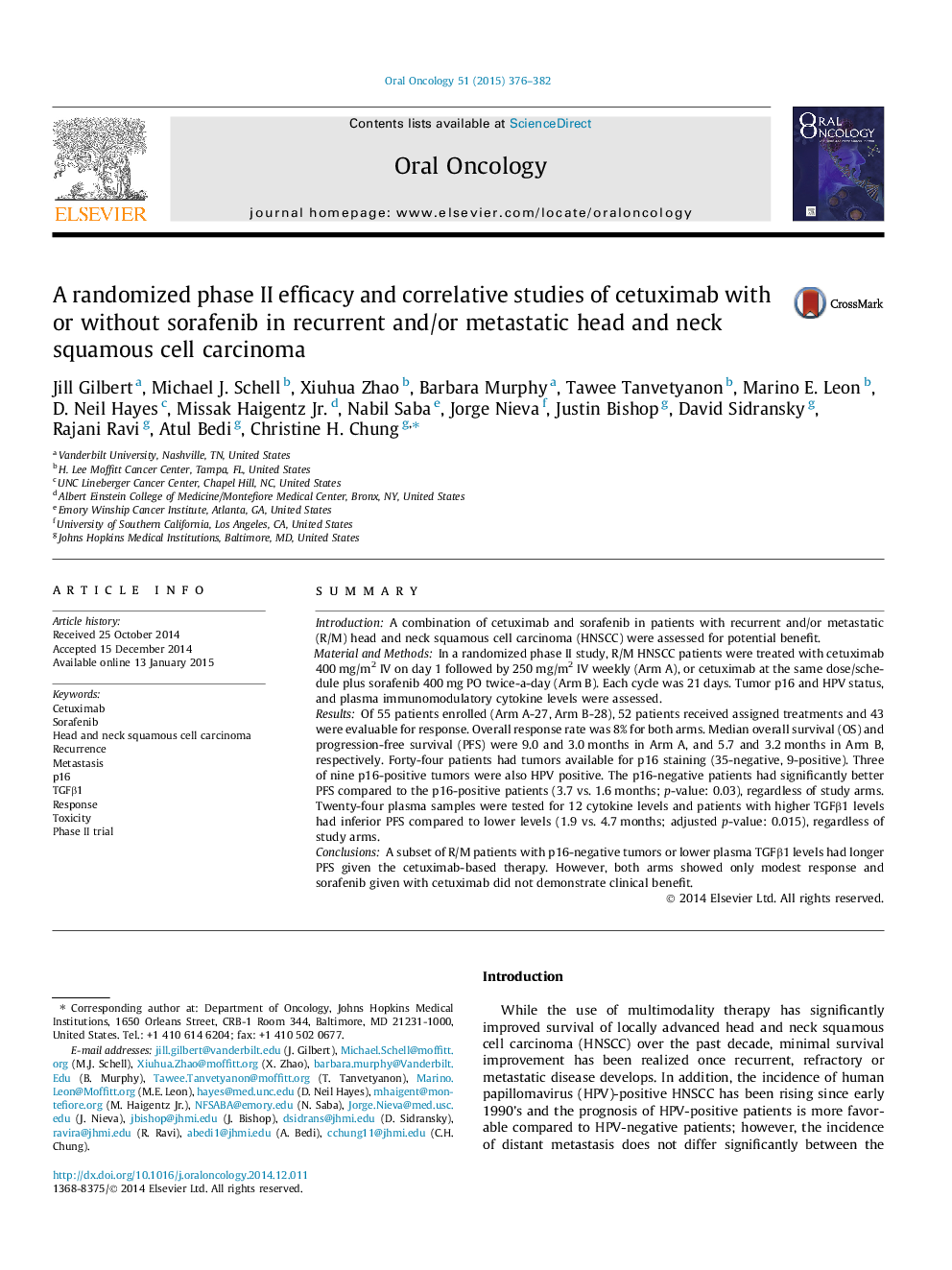| Article ID | Journal | Published Year | Pages | File Type |
|---|---|---|---|---|
| 3163968 | Oral Oncology | 2015 | 7 Pages |
SummaryIntroductionA combination of cetuximab and sorafenib in patients with recurrent and/or metastatic (R/M) head and neck squamous cell carcinoma (HNSCC) were assessed for potential benefit.Material and MethodsIn a randomized phase II study, R/M HNSCC patients were treated with cetuximab 400 mg/m2 IV on day 1 followed by 250 mg/m2 IV weekly (Arm A), or cetuximab at the same dose/schedule plus sorafenib 400 mg PO twice-a-day (Arm B). Each cycle was 21 days. Tumor p16 and HPV status, and plasma immunomodulatory cytokine levels were assessed.ResultsOf 55 patients enrolled (Arm A-27, Arm B-28), 52 patients received assigned treatments and 43 were evaluable for response. Overall response rate was 8% for both arms. Median overall survival (OS) and progression-free survival (PFS) were 9.0 and 3.0 months in Arm A, and 5.7 and 3.2 months in Arm B, respectively. Forty-four patients had tumors available for p16 staining (35-negative, 9-positive). Three of nine p16-positive tumors were also HPV positive. The p16-negative patients had significantly better PFS compared to the p16-positive patients (3.7 vs. 1.6 months; p-value: 0.03), regardless of study arms. Twenty-four plasma samples were tested for 12 cytokine levels and patients with higher TGFβ1 levels had inferior PFS compared to lower levels (1.9 vs. 4.7 months; adjusted p-value: 0.015), regardless of study arms.ConclusionsA subset of R/M patients with p16-negative tumors or lower plasma TGFβ1 levels had longer PFS given the cetuximab-based therapy. However, both arms showed only modest response and sorafenib given with cetuximab did not demonstrate clinical benefit.
